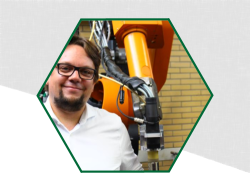Besides applications like layering functional surfaces, laser cladding can be used for additive manufacturing and repair welding purposes called directed energy deposition (DED). DED is a more and more used technology in industry and research today. It fills the gap between high-resolution powder bed selective laser melting and high output wired arc additive manufacturing processes.
The temperature-time-regime is important to be managed in the whole process. With increasing melt pool sizes according to heat accumulation, distortions and residual stresses get out of control. Hence, the part could be cooled between each layer. The temperature could be measured in order to derive the cooling time. However, if the part geometry is known and repeated in an industrial process, the cooling time will always remain the same. Modelling the process with a Finite Element Analysis (FEA) can also help to predict the correct cooling time. In order to achieve suitable results of the FEA Model, the Model has to be calibrated. Moreover, calculation times of FEA can be high according to the complexity and dimensions.
In powder based additive manufacturing process FEA it is quite common to work with replacement heat sources. These Approaches cannot be transferred to DED because of the process conditions. However, some simplification in the model might lead to sufficient results. In this study we have investigated a process with 15 thermocouples and compared the results with a FEA model. The influence of the process efficiency, heat radiation and thermo-physical-properties in the FEA result is shown.
Keywords
- Directed Energy Deposition
- Finite Element Analysis

